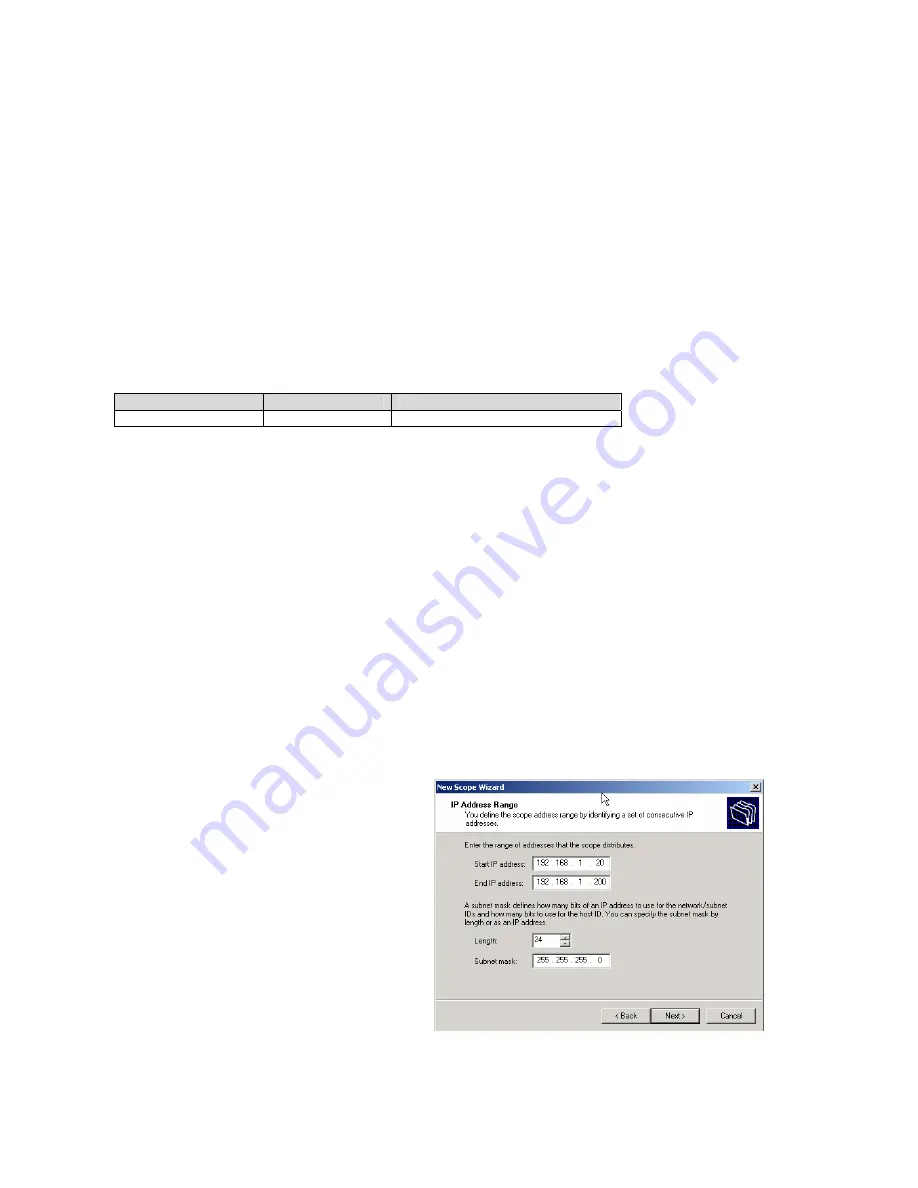
CTI 2572-A Installation and Operation Guide
110
The host characteristic most commonly used to associate a fixed IP address with a device is the
hardware address of the network interface, also referred to as the link layer address or the MAC ID.
For Ethernet networks, the MAC ID is assigned at the factory by the manufacturer of the Ethernet
product. The disadvantage of using the MAC ID as a means of assigning an IP address surfaces when
the device must be replaced. Because the new device will have a new MAC ID, the DHCP server
must be re-configured. For devices administered by the information services personnel, reconfiguring
the DHCP server is usually acceptable. For plant floor devices, the requirement to reconfigure a
DHCP server when a device is replaced by maintenance can be problematic.
An alternate method allows the use of a user-specified field known as a Client Identifier (Client ID)
for this purpose. The 2572-A module uses a patent-pending technique to generate a Client ID by
concatenating the value of the module ID switches with a fixed value representing the CTI Ethernet
manufacturer ID (assigned by IEEE) and the first four digits of the product number as shown below.
CTI Manufacturer ID
Product Number
Module ID
002025
2572
01 thru FE
For example, if you set the Module ID switches to a value of 56, the generated client ID would be
002025257256.
Once you configure the DHCP server to associate this Client ID with a fixed IP address and set the
Client ID switches accordingly, the module will automatically obtain its IP address and other network
parameters from the DHCP server when it starts up. Should you need to replace the module for any
reason, the only configuration required of the replacement module is to set the module option
switches and Module ID switches to match the previous module.
Configuring a DHCP Server
There are several alternatives for implementing a DHCP server. The most common alternative is to
use the DHCP server that is included with Microsoft server software. This example assumes that you
are using the Microsoft DHCP manager in Windows 200 Advanced Server. Other DHCP servers
provide similar features, but the terminology may vary slightly. This example assumes that you are
starting with a fresh instance of a DHCP server. If you are adding the 2572-A to an existing DHCP
server, you may be able to skip some of these steps.
Create a Scope
A Scope identifies a range of IP addresses that
will be managed by the DHCP server. If a
scope has not been defined, you will need to
create one. Figure 18 illustrates the dialog box
for specifying the scope range and associated
subnet mask. In this example, a pool of
addresses from 192.168.1.20 through
192.168.1.200 is included in the scope.
Figure 18. DHCP Scope Range
Содержание 2572-A
Страница 8: ......
Страница 16: ......
Страница 28: ......
Страница 32: ......
Страница 60: ......
Страница 84: ......
Страница 96: ......
Страница 104: ...CTI 2572 A Installation and Operation Guide 96 WX WY Quick Reference...
Страница 112: ......
Страница 116: ......
Страница 126: ......
Страница 130: ...CTI 2572 A Installation and Operation Guide 122 WX WY Quick Reference...













































